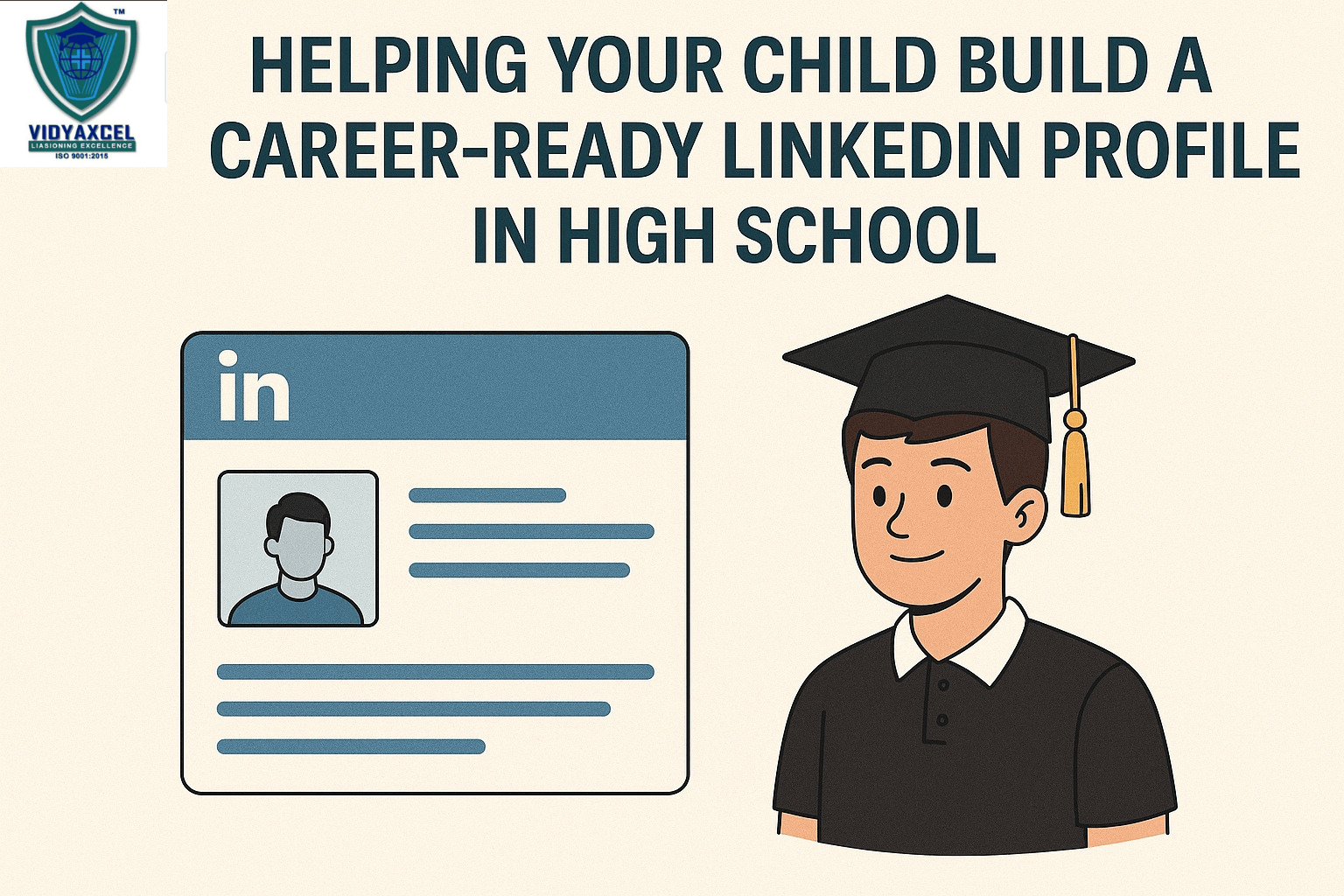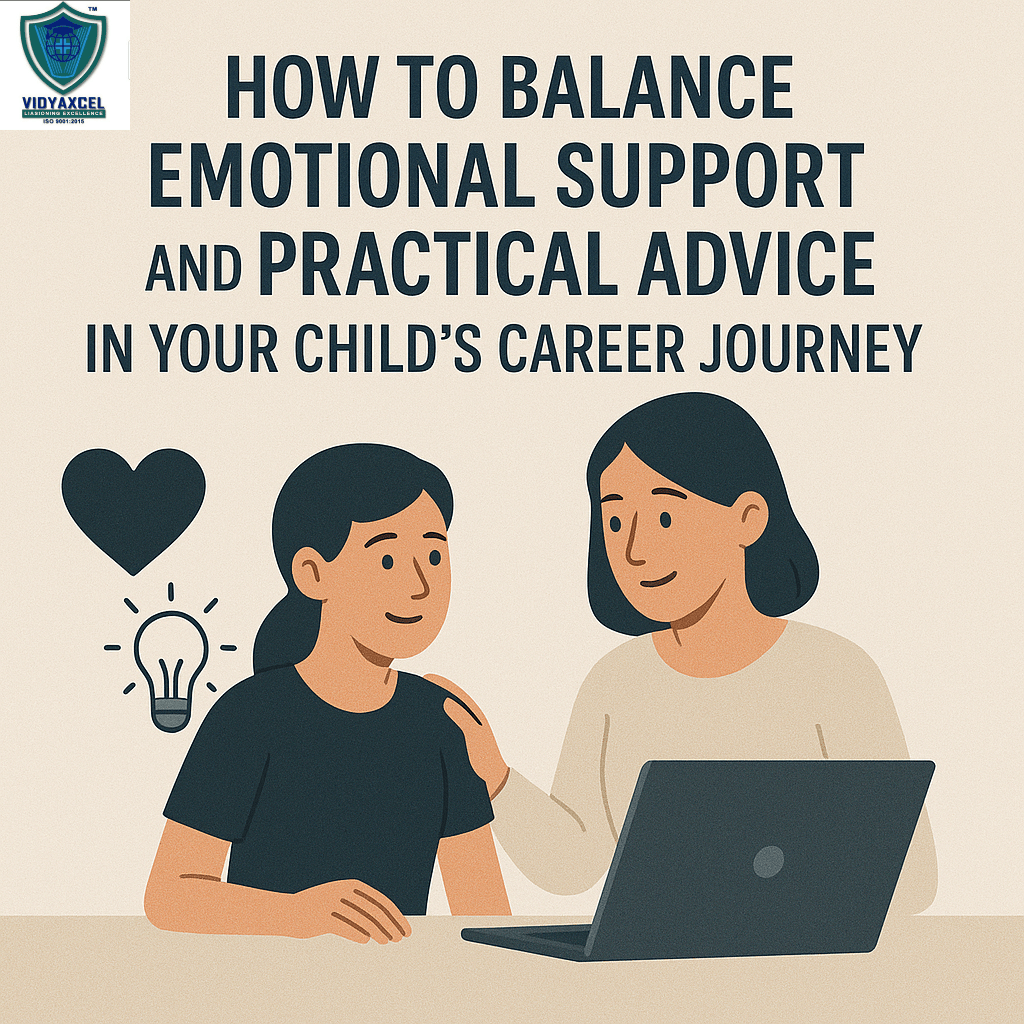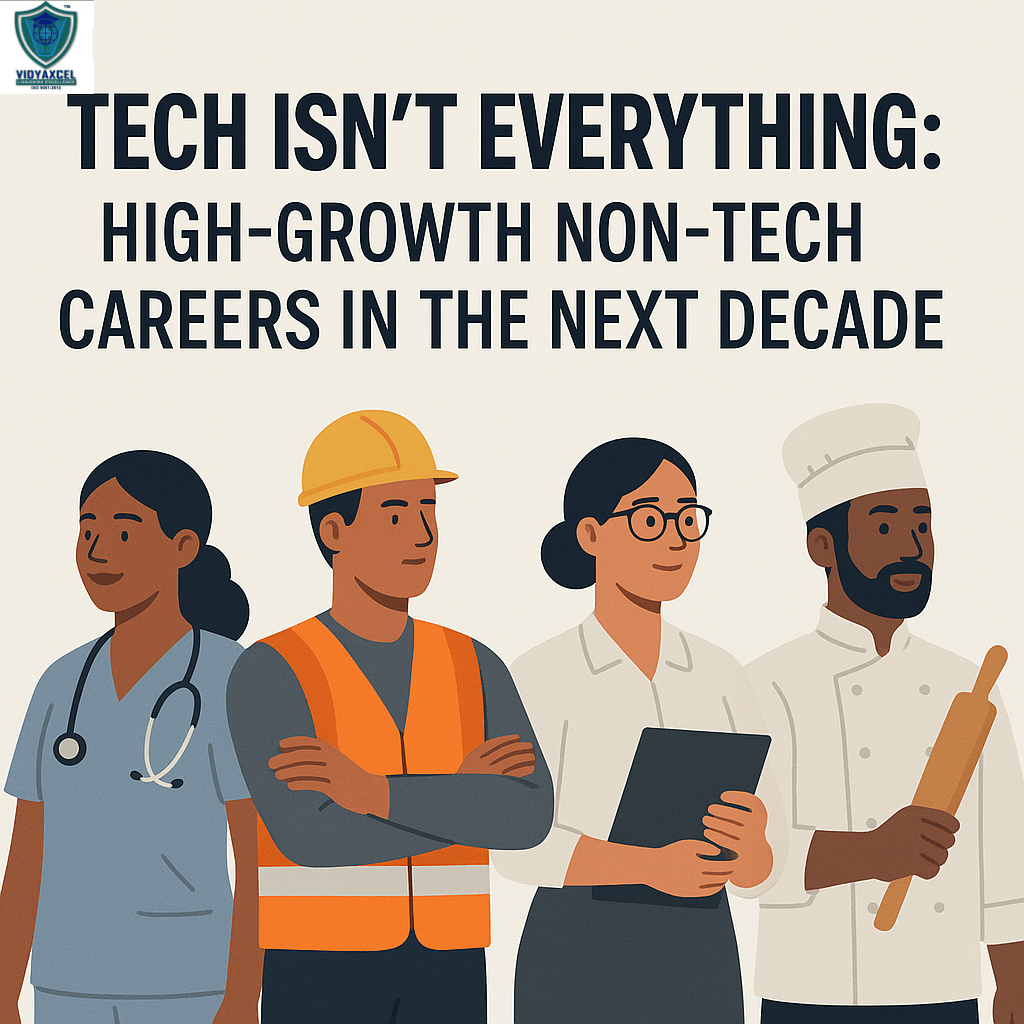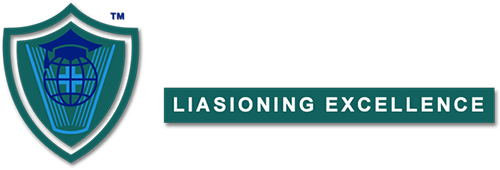Blog Details

25Jul
Helping Your Child Build a Career-Ready LinkedIn Profile in High School
In today’s hyper-connected world, career building doesn’t start after graduation — it starts in high school. High-achieving students are now creating professional digital footprints early through platforms like LinkedIn. From internships and scholarships to global exposure and mentor connections, LinkedIn opens powerful doors. For parents, this is a chance to guide, not control — and help children stand out with credibility in a competitive world.
🧠 Section 1: What is LinkedIn and Why Should High Schoolers Use It?
LinkedIn is a professional social network used by:
-
Recruiters
-
College admissions officers
-
Scholarship committees
-
Internship providers
-
Industry mentors
🎯 Key Benefits for High School Students:
-
Early networking with industry experts
-
Visibility to college admissions officers
-
Finding virtual internships & competitions
-
Publishing blogs or projects
-
Learning from real-world professionals via LinkedIn Learning
🔍 Section 2: Is It Too Early to Build a LinkedIn Profile?
Not at all. Students aged 16+ can create accounts (with parental consent under 18 in some regions). In fact, many competitive schools now encourage early digital presence.
What matters is:
-
Authenticity: Don’t fake achievements
-
Consistency: Align with resume or academic records
-
Professionalism: It's not Instagram – keep it formal
🛠️ Section 3: Step-by-Step Guide to Building a Career-Ready Profile
Let’s break down the 10 essential steps to creating an impressive LinkedIn profile:
🔹 Step 1: Choose a Clear Profile Photo
-
Use a well-lit, smiling headshot
-
Dress semi-formally or in school uniform (if appropriate)
-
Avoid distracting backgrounds or selfies
📝 Tip for Parents: Hire a professional photographer during college application season. A good headshot goes a long way.
🔹 Step 2: Create a Strong Headline
Avoid: “Student at XYZ School”
Better: “Aspiring Software Developer | Math Olympiad Winner | STEM Enthusiast”
🧠 Pro Tip: Use keywords based on career interests (coding, public speaking, science, entrepreneurship, etc.)
🔹 Step 3: Write a Compelling ‘About’ Section (Summary)
Structure:
-
Interests & Goals: "I'm passionate about AI, ethical hacking, and solving real-world problems..."
-
Achievements: “Won the district-level science fair and completed Python basics at Coursera...”
-
Future Plans: “Looking to pursue computer science and work on impactful research...”
📝 Keep it under 300 words but full of personality.
🔹 Step 4: List Education Accurately
Add:
-
School name
-
Expected year of graduation
-
Relevant coursework (STEM, Humanities, Commerce subjects)
-
Any international programs (e.g., IGCSE, IB, AP)
📌 Add activities like Model UN, debate, coding clubs, school editorial board, etc.
🔹 Step 5: Highlight Experiences (Even If Non-Work)
Students often worry: “But I don’t have a job yet.”
List:
-
Volunteer work
-
Science exhibitions
-
Hackathons
-
Student leadership roles
-
NGO or community campaigns
-
Blogging, podcasting, content creation
📌 Each counts as “experience” when properly described.
🔹 Step 6: Add Projects & Portfolios
Project ideas to include:
-
Personal blog or YouTube channel
-
A science or robotics project
-
Mobile app development
-
Writing a short eBook
-
Environmental campaign or debate
🎨 Upload visuals, links, documents, or code (e.g., GitHub)
🔹 Step 7: Showcase Skills & Endorsements
LinkedIn allows listing up to 50 skills. Start with:
-
Public speaking
-
Data analysis
-
Python or Canva
-
Leadership
-
Content writing
🎓 Ask teachers or mentors to endorse them as the student builds credibility.
🔹 Step 8: Request Recommendations
Yes, high schoolers can have recommendations!
Ask:
-
Teachers
-
Club mentors
-
NGO heads
-
Summer internship supervisors
📩 Draft the message together with your child for polite, professional outreach.
🔹 Step 9: Follow & Engage with Relevant Profiles
Help your child follow:
-
University admissions pages
-
STEM influencers (e.g., MIT, NASA, Google AI)
-
Student success stories
-
Education mentors and career counsellors
🧠 Teach them to comment thoughtfully on relevant posts — it builds visibility.
🔹 Step 10: Keep Updating the Profile Every Semester
Set a bi-annual reminder to:
-
Add new achievements
-
Update project links
-
Reflect new interests or courses
📅 Treat it like a digital report card and storybook combined.
💼 Section 4: Career Readiness Starts with Early Branding
In a competitive admissions and internship environment, your child is not just a student — they are a brand.
A great LinkedIn profile helps:
-
Build confidence
-
Refine career clarity
-
Receive mentorship offers
-
Attract internships and competitions
🧑🏫 Section 5: Parental Role in LinkedIn Building
✅ Do:
-
Review grammar and content
-
Encourage exploring interests
-
Connect your child with family friends/mentors
-
Provide exposure to tech tools
❌ Don’t:
-
Write the profile yourself
-
Force your child to “sound professional”
-
Compare them with others
🧘 Let them grow with the platform.
🧭 Section 6: Career Fields Where a LinkedIn Profile Helps Early
Top domains where LinkedIn presence helps early:
-
Software Development / AI / Robotics
-
Journalism & Media
-
Entrepreneurship / Business
-
Law & Public Policy
-
STEM Research
-
Arts & Design
-
Finance / Economics
-
Environmental & Social Impact
These domains increasingly use LinkedIn for networking, internships, and awards.
💡 Section 7: Mistakes to Avoid on a Student LinkedIn Profile
-
Using casual bios or emojis
-
Leaving profile blank for months
-
Making false claims or exaggerating
-
Connecting with strangers randomly
-
Ignoring privacy settings
📌 Tip: Set profile to visible to recruiters + allow public view if college admissions are using it.
📚 Section 8: Tools & Resources to Explore
| Tool | Purpose |
|---|---|
| Canva | Create resume-style graphics |
| Grammarly | Polish content and summary |
| GitHub Pages | Host code projects |
| Medium/Substack | Publish blogs linked to profile |
| Coursera/edX | Certificate courses in relevant domains |
| Google Scholar | Research citations and reading material |
| LinkedIn Learning | Short professional courses |
🔗 Section 9: Example of a High School LinkedIn Profile (Template)
Name: Ria Mehta
Headline: Aspiring Environmental Scientist | National Science Olympiad Silver Medalist | High School Climate Blogger
Summary:
"I am a high school senior passionate about solving climate challenges through science and innovation..."
Experience:
-
Student Research Intern at Local Waste Management NGO
-
President – Eco Club at XYZ High School
-
Volunteer – Plastic-Free India Drive
Skills:
-
Public Speaking
-
Research Writing
-
Canva
-
Leadership
Projects:
-
Climate Change Awareness Campaign (500+ attendees)
-
Research on plastic pollution alternatives
Conclusion: Helping Without Hovering
Supporting your child on LinkedIn is about empowerment, not enforcement. Encourage self-expression, celebrate milestones, and guide them in creating a digital presence that reflects their authentic ambition. Let LinkedIn be more than a platform — let it be their first career journal.
FAQ's
Q1. At what age should my child start a LinkedIn profile?
Ideally around 16–17 years, especially if they’re applying for:
-
Foreign universities
-
Internships
-
Competitive scholarships
-
Coding/Research fellowships
Q2. Is LinkedIn safe for high school students?
Yes — with:
-
Proper privacy settings
-
Parent supervision (early on)
-
Avoiding random connection requests
-
Not oversharing personal information
It’s more secure than social media platforms like Instagram or Snapchat.
Q3. What achievements can my child add if they don’t have internships yet?
-
School-level competitions
-
Class representative roles
-
Blog writing
-
Course completions (Coursera, Udemy, Khan Academy)
-
Community service or campaigns
The goal is to highlight initiative and interests, not just big titles.
Q4. How can LinkedIn help in college admissions?
Admissions officers sometimes check online presence for:
-
Passion in specific fields
-
Real-world application of skills
-
Thought leadership (blog posts, comments, activities)
A LinkedIn profile can act like a portfolio supplement.
Q5. Should my child connect with adults on LinkedIn?
Yes — with:
-
Teachers
-
Alumni of the schools they’re applying to
-
Industry mentors
-
Parents' professional network
It’s all about intentional networking, not random adds.
Our Office: West Bengal, Maharashtra & Delhi.
For More Infomation about admission in Medical, Engineering, Management & Study in Overseas Details.
View Current Study Overseas, Medical, Engineering & Management Admission Details Video.





